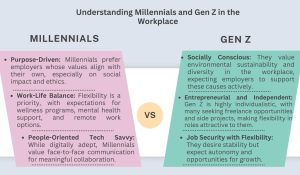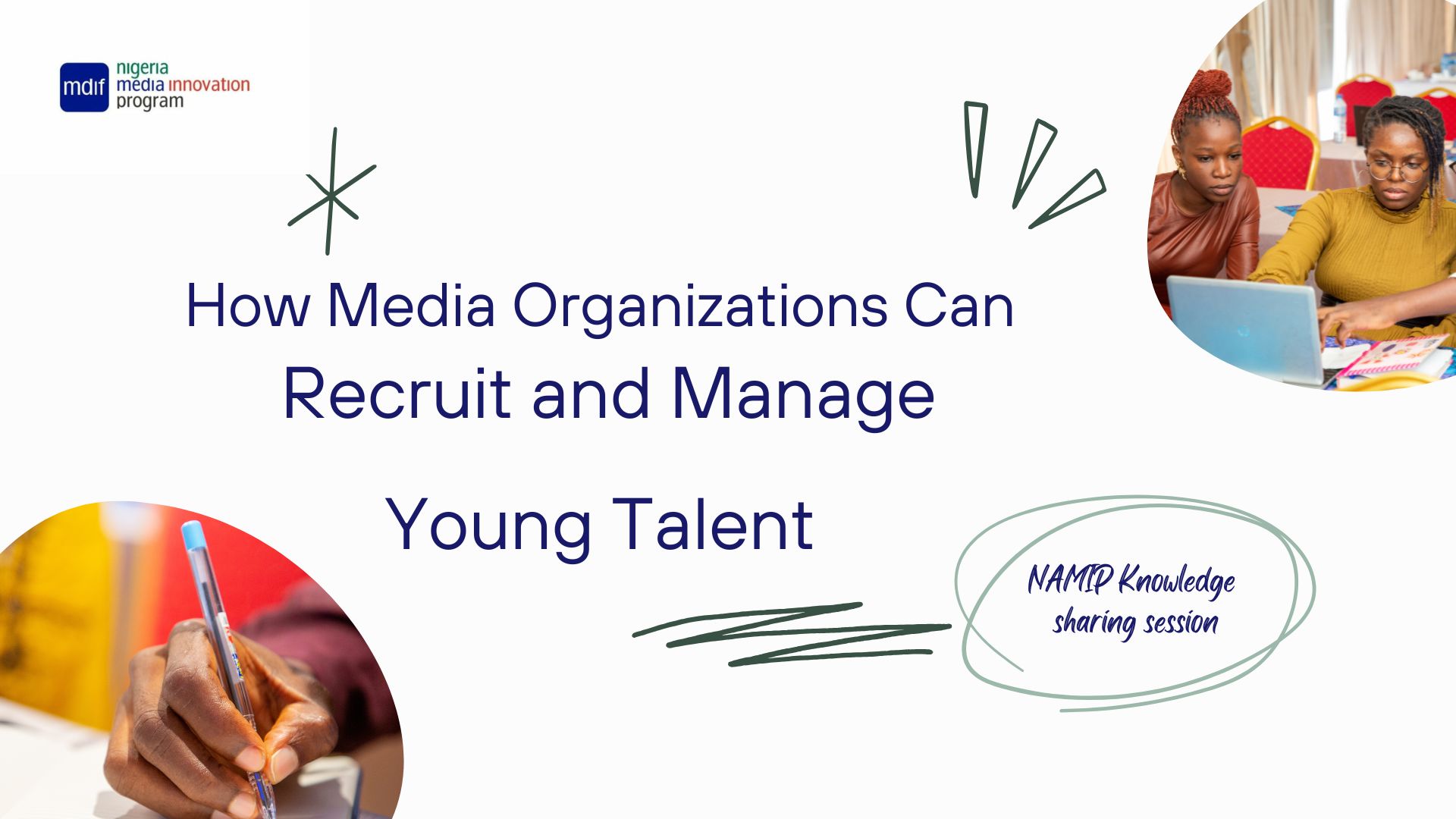By Muhammad Dalhatu
In today’s fast-evolving media landscape, successfully recruiting and managing young talent is crucial for staying competitive. This was the topic of discussion at NAMIP’s Knowledge sharing session on October 29, led by Ifeoma Williams, Head of Human Resources at BusinessDay Media Ltd. As Ifeoma mentioned, millennials (born between 1981-1996) and Gen Z (born between 1997-2012) bring unique strengths and expectations that, when understood and harnessed, can lead to innovative growth and resilience within media organizations. Below are key insights and strategies she shared that can help media organizations attract, engage, and retain these digital-savvy generations.
It Begins with recognizing The Value of Young Talent
Young professionals drive change in the workplace with fresh ideas, adaptability, and advanced tech skills. Their ability to quickly learn and navigate digital tools makes them valuable assets in an industry that thrives on technological innovation and agility.
Here are 3 advantages of Young Talent:
- Innovation and New Perspectives: Younger professionals question conventional approaches, offering creative solutions to complex issues and contributing to a culture of innovation.
- Digital Expertise: Digital natives are proficient with emerging technologies and social media, which can enhance audience engagement, brand reach, and operational efficiency.
- Future Leadership Pipeline: Recruiting and developing young professionals builds a foundation for future leadership, ensuring a steady succession plan.
Each generation also brings distinct characteristics and work values, which can be aligned with organizational goals to foster engagement and productivity, here are a few:

Photo Credit: NAMIP
Followed by Developing Strategies for Recruiting Young Talent
Ifeoma provided us with insights on how to recruit young talent. Media organizations can attract this demographic by aligning with their values, offering flexible work options, and effectively using technology to engage them. Key areas include Employer Branding and Culture. It’s essential to highlight the organization’s purpose and social impact by promoting a culture that emphasizes social responsibility and ethical practices. This can be showcased through social media and the company’s website. Additionally, committing to diversity and inclusion is crucial, as young professionals are drawn to organizations that foster these values.
Another strategy for recruitment is to offer flexible work options, such as remote and hybrid work models, as well as wellness programs. Providing flexible work arrangements makes positions more attractive to younger candidates. Offering wellness support shows a commitment to employees’ mental and physical health, which is a priority for both Millennials and Gen Z.
Finally, media organizations can implement digital recruitment tactics to attract young professionals. One effective approach is social media engagement. Utilizing platforms like LinkedIn and Instagram can help reach younger talent. It’s also vital to ensure that websites and job applications are mobile-friendly since many young professionals apply for jobs using mobile devices, making the application process user-friendly and accessible.
Next Up – Have an Effective Onboarding Strategy
According to Ifeoma, the next steps for recruiting young professionals involve implementing an effective onboarding strategy. The onboarding process should be viewed as an opportunity to help new hires align with the company’s values and gain confidence in their roles, thereby setting a positive tone for their careers.
This includes creating a structured and inclusive onboarding experience that introduces young employees to the organization’s mission, values, and digital tools. It is important to provide clear expectations regarding company culture and to establish a roadmap for their first few months. Additionally, developing mentorship programs by pairing new employees with experienced mentors can guide them in understanding company culture, navigating career paths, and accessing professional development resources.
Retention, Management and Motivating Young Professionals
When it comes to managing and motivating young professionals, Ifoma recommends engaging employees by focusing on their motivations and providing opportunities for growth and impact. This can be achieved in three ways:
- Purpose-Driven Roles: Emphasize the significance of each role in achieving the company’s mission, showcasing how their work contributes to broader goals.
- Frequent Feedback: Regular check-ins help young professionals feel supported and valued, providing real-time feedback and recognition for their achievements.
- Career Development Paths: Offering clear career progression options helps younger employees envision a future with the organization, which can reduce job-hopping tendencies.
Ifeoma believes that the retention of young talent can be achieved by developing an inclusive culture and providing growth opportunities. Young professionals often seek workplaces that support ongoing learning, career mobility, and commitments to values like diversity and work-life balance. This can be accomplished by fostering leadership involvement through encouraging open communication between young employees and senior leaders, as well as creating opportunities for feedback and mentorship.
Additionally, supporting diversity and inclusion can be enhanced by establishing Employee Resource Groups (ERGs) and creating open dialogue spaces to discuss social issues, which in turn, boosts employee satisfaction. Importantly, providing flexible career paths that allow for lateral moves and internal rotations helps employees explore new roles within the company, meeting their desire for varied experiences.
Overall, attracting and managing young talent is vital for media organizations seeking long-term growth and resilience in an increasingly digital world. By creating purpose-driven, flexible, and inclusive workplaces that align with the values of Millennials and Gen Z, media organizations can harness the strengths of these generations to foster a vibrant, innovative, and future-ready workforce.

